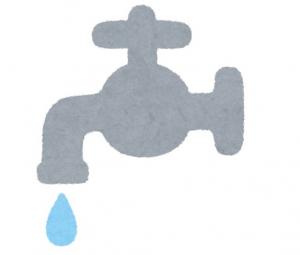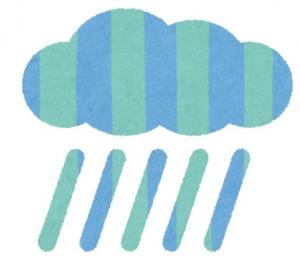About Sea Area Monitoring Associated with the Discharge of ALPS Treated Water into the Sea
While sea area monitoring associated with the discharge of ALPS Treated Water has previously been conducted at 6 designated points ((1) to (6) as illustrated in the map below) in close proximity to the Fukushima Daiichi Nuclear Power Station (FDNPS), it has been extended to encompass 9 points. This expansion incorporates 3 additional monitoring points ((7) to (9) on the provided map), implemented during the 2022 Fiscal Year. The purpose of this expansion is to ensure precise measurements of radioactive material concentrations both before and after the water discharge, facilitating a comprehensive comparative analysis.
Furthermore, alongside the ongoing tritium monitoring at the 9 designated points post-discharge, rapid analysis has been additionally conducted to promptly measure and publicize nuclide concentrations in seawater.
This comprehensive monitoring also encompasses other radioactive isotopes, including Cesium-137.
Monitoring Result of 26 September, 2023 (Rapid Analysis Method, Tritium)
On 26 September, 2023, seawater samples were subjected to rapid analysis, revealing that tritium concentrations were below the lowest detection limit(below 3.7~4.0 Bq/L) at all monitoring points. This outcome assures there is no discernible impact on either human health or the environment.
Rapid Analysis of Tritium is a significantly expedited process, characterised by reduced measurement duration, with the designated lowest detection limit set at 10Bq/L.
The measured value, falling below the target’s lowest detection limit of 10Bq/L, indicates that it is lower than the highest measured value in the nation’s seawater since 2015, which was 20Bq/L. This value is well below the national standard for discharged water and the WHO standard for drinking water.
Furthermore, to enhance the analysis, more precise measurements will be conducted with a lowest detection limit of 0.1 Bq/L. This will be achieved through the utilisation of the electrolytic enrichment method※1 at the same monitoring points, with the assessments scheduled on a monthly basis.
※1: Method that measures enriched tritium by utilising the nature of tritium
<Result of Rapid Analysis of Tritium in Seawater>

Assembled by Fukushima Prefecture Utilising GSI Map (web-base)
| Date of Sampling | Number of sampling points | Measurement Result |
|---|---|---|
| 25 Aug., 2023 | 9points | Below Lowest Detection Limit(Below 3.7~4.1 Bq/L) |
| 30 Aug., 2023 | 9points | Below Lowest Detection Limit(Below 3.9~4.4 Bq/L) |
| 3 Sep., 2023 | 9points | Below Lowest Detection Limit(Below 3.8~4.4 Bq/L) |
| 12 Sep., 2023 | 9points | Below Lowest Detection Limit(Below 3.4~4.0 Bq/L) |
| 19 Sep., 2023 | 9points | Below Lowest Detection Limit(Below 5.0~6.3 Bq/L) |
| Date of Sampling | Number of sampling points | Measurement Result |
|---|---|---|
| 26 Sep., 2023 | 11points | Below Lowest Detection Limit(Below 7~8 Bq/L) |
Click here for details(Link to Website of Ministry of the Environment)
| Date of Sampling | Number of sampling points | Measurement Result |
|---|---|---|
| 26 Sep., 2023 | 10points | Below Lowest Detection Limit(Below 5.6~7.9 Bq/L) |
Click here for details(Link to TEPCO Website)
Measurement Result at the Time of Pre-Discharge (Tritium, Cesium137, etc.)
The concentration of all radioactive isotopes (including tritium (H3) and cesium (Cs137)) in seawater measured consistently remained well below both the national regulatory standard for discharged water safety and the WHO standards for drinking water. These measurements were in alignment with the results obtained near the FDNPS at that time.
<Measurement Locations and Measurement Result>

Assembled by Fukushima Prefecture Utilising GSI Map (web-base)
※Tritium concentration measured through electrolytic enrichment method
 |
Seawater | 20 Bq/L or less |
 |
Tap Water | 1.2 Bq/L or less |
 |
Rainwater(precipitation) |
7.3 Bq/L or less |
Source: ALPS Treated Water Marine Monitoring Information, Ministry of the Environment(Click here for details)
| H-3(Bq/L) | Cs-137(Bq/L) | |
| Regulartory Standards of Tritiumu and Cesium-137 for safety | 60,000※2 | 90※2 |
| WHO Standards for Drinking Water | 10,000※3 | 10※3 |
※2: Represents the value of radioactive materials’ concentration that, if ingested at a rate of 2L of water daily from birth to age 70, would result in an average annual radiation dose of 1mSv.
※3: Represents the value of radioactive materials’ concentration that, if ingested at a rate of 2L of water daily for one year, would result in an annual radiation dose of 0.1mSv.
Source: ALPS Treated Water Marine Monitoring Information, Ministry of the Environment(Click here for details)
| FY 2022 | FY 2019~FY 2021 |
FY 2014~FY 2018 |
Immediately after the nuclear accident (FY 2011~FY 2013) |
Before the nuclear accident | |
| Tritium (H-3) |
0.80 Bq/L or less ※5 |
8.6 Bq/L or less ※4 |
8.8 Bq/L or less ※4 |
6.2 Bq/L or less | 2.9 Bq/L or less |
| Cesium-137 (Cs-137) |
0.16Bq/L or less | 0.38 Bq/L or less | 1.6 Bq/L or less | 5.0 Bq/L or less | 0.003 Bq/L or less |
※4: The highest measured value showed a relative increase when seawater monitoring began around the water outlet, coinciding with the discharge of bypassed groundwater into the sea in May, 2014.In addition, the measurement results excluding the area near the drainage point of Underground water bypass are less than 2.6 Bq/L from FY 2014 to FY 2018, and less than 1.4 Bq/L from FY 2019 to FY 2021.
※5: Due to safety concerns associated with sampling near the outlet, the monitoring point was relocated from the vicinity of the bypassed water outlet to a location 1.3km south of the outlet in October, 2021.
Monitoring points
Sea area near TEPCO FDNPS (9 points)
(1) Near FDNPS South Water Outlet
(2) Near FDNPS North Water Outlet
(3) Near FDNPS Water Intake (near port entrance)
(4) 2km off FDNPS
(5) 2km off Kumagawa Coast, Okuma Town
(6) 2Km off Maeda-Gawa Coast, Futaba Town
(7) 2km North, 0.5km West of ALPS Discharge Outlet
(8) 1km North of ALPS Discharge Outlet
(9) 1km South of ALPS Discharge Outlet
Items of Analysis
Seawater (surface water, 185L) has been sampled at each point, then analysed for the following 5 items at Centre for Environmental Creation
(1) Gamma ray emitting nuclear species (Cesium-137, etc.)
(2) Tritium
(3) Radioactive Strontium
(4) Plutonium
(5) Gross β
Other results of research
・ALPS Treated Water Marine Monitoring Information ※Link to Website of Ministry of the Environment
・Sea Area Environmental Monitoring Related to the Discharge of ALPS Treated Water ※Link to The Nuclear Regulation Authority Website
・Sea Area Monitoring ※Link to TEPCO Website
・Results of the Monitoring on Radioactivity Level in Fishery Products ※Link to Ministry of Fisheries Agency Website
・Fukuhima prefecture agriculture, forestry and fisheries products processed food monitoring information ※Link to website of Agriculture,Forestry andFishery Department
・Fukushima Prefecture Radioactivity Measurement Map
・Environmental Radioactivity Measurement Result inthe Vicinity of the Power Station


